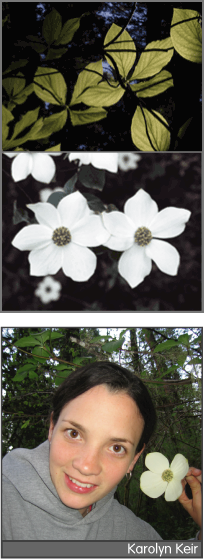Pacific dogwood (Cornus nuttalli)
 The cumulative findings of this study suggest that low genetic diversity is ubiquitous throughout the native range of Pacific dogwood. Although genetically depauperate species are often of great conservation concern, results suggest this species may have a relatively long history of low diversity. This observation may illustrate the ambiguous correlations of neutral diversity, quantitative trait variation and adaptability. Although some species are capable of thriving following a bottleneck it is dangerous to assume this would be the case for all genetically depauperate species. It would be advisable for baseline data to be collected regarding population sizes and densities, in the event that Pacific dogwood should show signs of decline in the face of climate change or new or intensified biotic challenges. This is especially true for the southern populations, which have been shown to have the highest contributions to both total diversity and allelic richness. Without anywhere to go, these southern high elevation populations (> 1000m) would be forced to adapt or face elimination. The weak phylogeographic structure and low levels of among population differentiation suggest Pacific dogwood possesses great capacity for long distance dispersal. In the face of a rapidly changing climate, this feature would advantageous as it appears predisposed to move quickly into new, climatically favorable habitats. This genetic study is the first of its kind for Pacific dogwood and there is still much to be learned.
The cumulative findings of this study suggest that low genetic diversity is ubiquitous throughout the native range of Pacific dogwood. Although genetically depauperate species are often of great conservation concern, results suggest this species may have a relatively long history of low diversity. This observation may illustrate the ambiguous correlations of neutral diversity, quantitative trait variation and adaptability. Although some species are capable of thriving following a bottleneck it is dangerous to assume this would be the case for all genetically depauperate species. It would be advisable for baseline data to be collected regarding population sizes and densities, in the event that Pacific dogwood should show signs of decline in the face of climate change or new or intensified biotic challenges. This is especially true for the southern populations, which have been shown to have the highest contributions to both total diversity and allelic richness. Without anywhere to go, these southern high elevation populations (> 1000m) would be forced to adapt or face elimination. The weak phylogeographic structure and low levels of among population differentiation suggest Pacific dogwood possesses great capacity for long distance dispersal. In the face of a rapidly changing climate, this feature would advantageous as it appears predisposed to move quickly into new, climatically favorable habitats. This genetic study is the first of its kind for Pacific dogwood and there is still much to be learned.
Funding: Forest Investment Account through Forest Genetics Council of BC
Principal participants: [ Keir | Aitken | C. Ritland ]
for More information
Keir, K.R., JB Bemmels and S.N. Aitken. 2011. Low genetic diversity, moderate local adaptation, and phylogeographic insights in Cornus nuttallii (Cornaceae). American Journal of Botany 98: 1327-1336.
